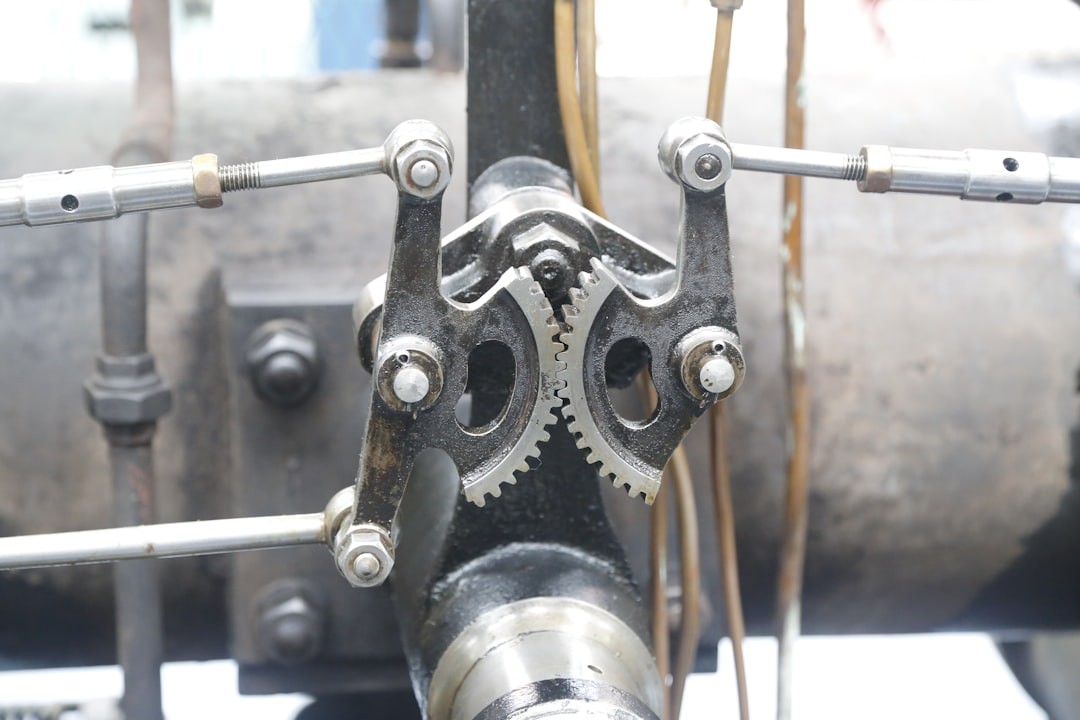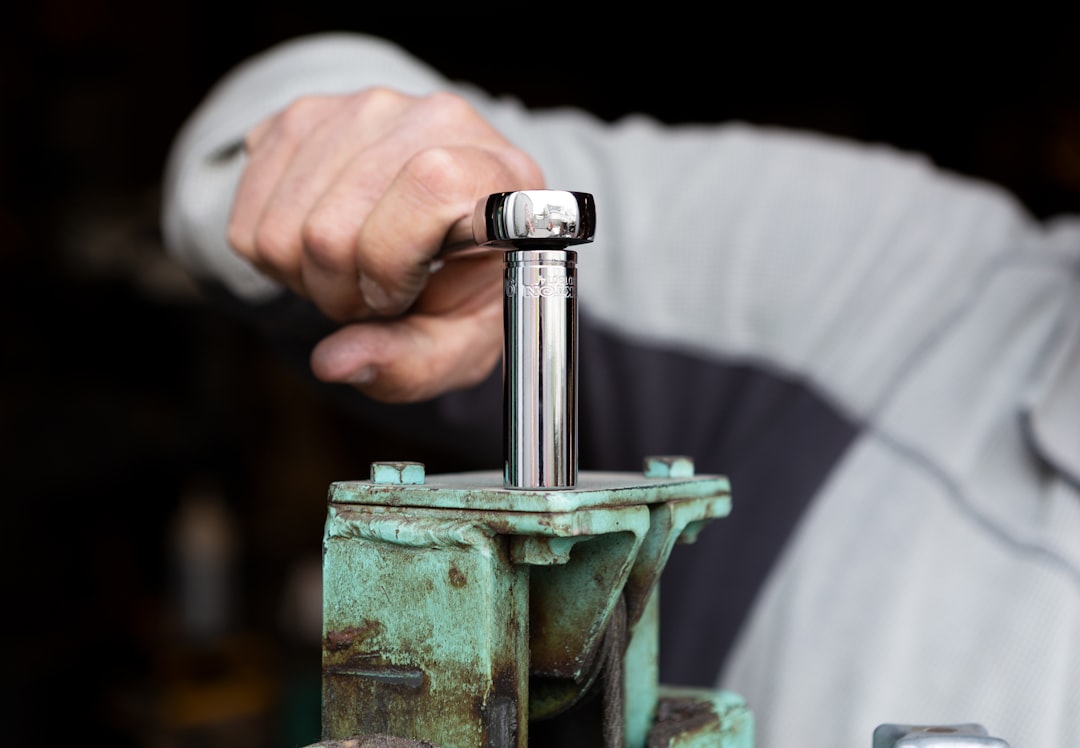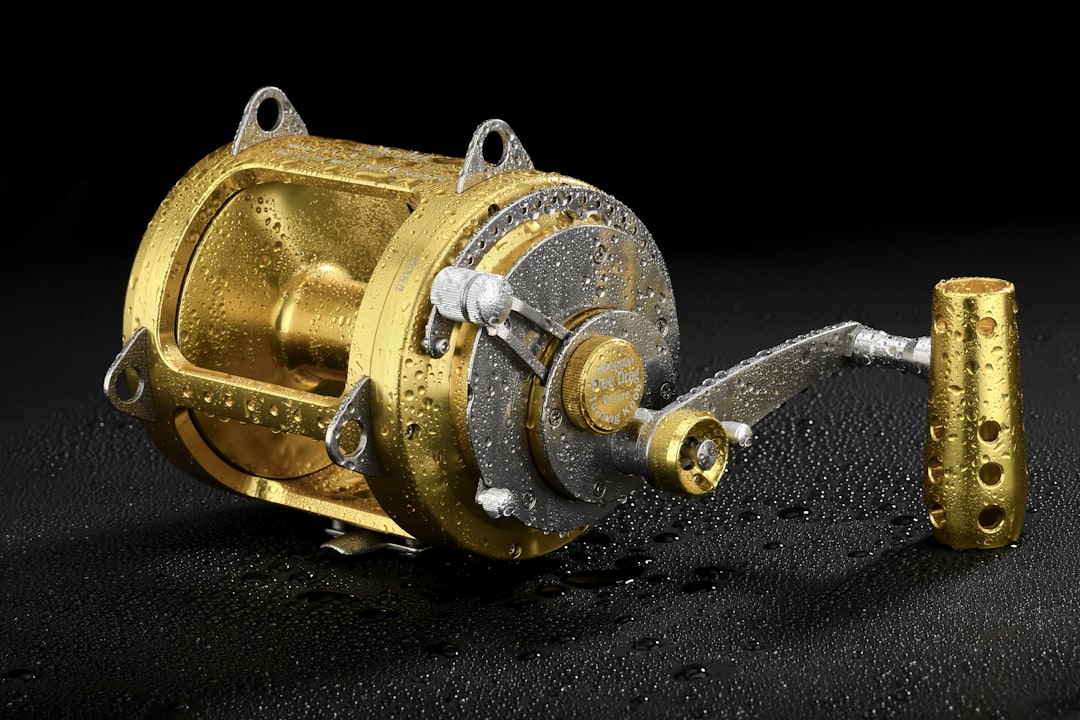

Engage prospects with a scan and streamline customer engagement with FREE QR code marketing tools by Sona – no strings attached!
Create a Free QR CodeFree consultation

No commitment

Engage prospects with a scan and streamline customer engagement with FREE QR code marketing tools by Sona – no strings attached!
Create a Free QR CodeFree consultation

No commitment
Valve repair services are at a pivotal crossroads as industrial maintenance demands, compliance expectations, and operational efficiency pressures intensify across the sector. Many organizations still rely on paper logs, static service records, and outdated manual processes to track complex valve inventories. See valve tracker technology. Managing routine inspections in this fashion results in frequent missed repairs, regulatory headaches, and underutilization of skilled technicians. These inefficiencies not only lead to increased operating costs but also hinder timely responses to urgent maintenance needs, leaving business opportunities on the table.
A persistent pain point in this environment is the inability to capture and act on valuable prospect or equipment data at the right moment. For example, high-value prospects engaging with field documentation or partner sites are often untracked, leading to missed sales or delayed service outreach. Sona is an AI-powered marketing platform that turns first-party data into revenue through automated attribution, data activation, and workflow orchestration. For strategy on tying offline scans to revenue, see Sona’s blog post Essential Guide to Offline Attribution. The lack of real-time visibility into equipment status or technician interactions makes it easy for maintenance issues and upsell opportunities to slip through the cracks.
QR codes are emerging as an operational game-changer. By embedding scannable codes on valves, service tags, manuals, and safety signage, businesses can instantly connect physical assets to digital resources for product traceability. This enables field teams to access maintenance histories, repair documentation, and self-service support guides without app installs, while also feeding crucial data back into centralized systems for timely follow-up and analysis. QR codes reduce paperwork and minimize manual entry errors, creating a more responsive, data-driven service environment that helps avoid lost opportunities and ensures compliance with industry standards.

Many service managers feel the pain of missed repairs or slow response times due to paper-based processes and scattered service documentation. Critical information is often siloed or goes unrecorded, increasing the risk that valuable maintenance details slip through the cracks. In competitive environments, not capturing these data points quickly enough can mean that high-intent prospects or urgent tickets are lost to competitors.
Modern QR workflows turn every physical touchpoint into a digital entry point that accelerates maintenance and sales outcomes. Instead of handing technicians binders or asking customers to fill out carbon copy forms, you can trigger instant access to repair histories, parts catalogs, and service request forms with a single scan. Replacing handwritten inspection logs with QR code ticketing dramatically cuts reporting time, reduces transcription errors, and gives managers a reliable view of asset condition and technician productivity.
Platforms built for industrial servicing centralize QR code generation and connect scan data directly to CRMs to surface which assets are due for repair, which customers are engaging, and which actions are most urgent. For example, migrating from paper inspection logs to QR-enabled digital tracking can halve reporting time, improve compliance readiness, and minimize the risk of missed regulatory deadlines. Sona QR supports this transformation end to end: generating dynamic QR codes, routing scans to the right destinations, and syncing granular engagement data with tools like Salesforce and HubSpot for rapid follow-up. See Sona QR’s product overview. Start creating QR codes for free at this link.

The challenge for valve repair services is not only technical complexity but also the constant risk of missing valuable engagement signals. Technicians operate in variable, high-stakes environments where compliance must be repeatedly demonstrated and maintenance records must be precise. Traditional recordkeeping often provides no way to attribute engagement when an anonymous prospect scans a service tag, reads a jobsite notice, or interacts with a printed brochure. The result: lost lead data and delayed follow-up actions that blunt revenue potential.
QR codes bridge this gap by connecting each scan on physical equipment to digital service logs, technical documentation, or emergency contacts. When a facility supervisor scans a maintenance sticker or a technician scans a repair tag, the visit can be attributed and acted upon, even if a form is not submitted immediately. For marketing and operations teams, scan data uncovers which valves or sites receive the most attention, which campaigns are working, and where to dispatch resources next. Dynamic QR codes are especially valuable in regulated environments since they allow you to change destinations or content without reprinting, keeping your documents and safety materials aligned with current standards.
These benefits map cleanly to materials common in this sector: appointment cards that direct to scheduling portals, lockout-tagout signage that links to latest procedures, and bill inserts that route clients to digital service agreements. Every scan becomes a moment of action that helps you serve better and sell smarter.

Many organizations struggle with scattered communication channels and inconsistent documentation, which leads to confusion and duplicate work. When a technician loses access to the latest manual or a supervisor cannot find a service history during an audit, both service quality and compliance suffer. QR codes standardize access to the right information at the right time, whether on a valve body in a humid plant or on a laminated inspection card in a maintenance cabinet.
The most effective QR formats for valve repair services align with real-world tasks in maintenance and sales. You can pair each format with a specific destination and outcome to guide user behavior and capture data in a structured way. Dynamic codes are recommended for most placements since content and compliance requirements change frequently.
With Sona QR, you can generate any of these formats, manage them in one platform, and switch destinations without reprinting when documentation is updated or a campaign changes focus. Static codes are viable for low-risk, unchanging assets like a PDF of a permanent facility map. Dynamic codes should be the default for anything tied to maintenance procedures, compliance, or active campaigns.
Growth stalls when physical and digital touchpoints are disconnected. A prospect reads a printed brochure but never visits your site. A technician leaves behind a paper maintenance report that never makes it into the CRM. QR codes align these touchpoints so every interaction is trackable and actionable. The result is faster time to resolution for service tickets and clearer attribution for marketing efforts that drive new business.
Valve repair providers can map QR placements to the moments that matter most. Focus on points in the workflow where time is lost, information is duplicated, or errors are common. By making those moments scannable, you reduce friction for technicians and customers while capturing valuable data automatically.
By prioritizing these placements, providers shorten response times for urgent requests, uncover engagement patterns that inform resource allocation, and bring transparency to the marketing channels that deliver measurable revenue.

Missed or delayed responses to asset signals are common in valve repair operations. A technician may find a deteriorating valve but lack a fast way to trigger an escalation. A supervisor may want to request a quote but has only a generic email address. QR codes remove these bottlenecks and give both technicians and customers a clear, guided next step that feeds accurate data to your systems.
Consider three foundational use cases that match typical customer interactions and deliver measurable outcomes:
Each approach closes a persistent loop: lost paperwork is replaced by digital records, late engagement becomes real-time action, and anonymous interest becomes attributable demand. Teams act faster, repair costs drop, and service quality improves.
Valve repair providers often miss follow-up opportunities because critical buyer or technician data never reaches the CRM. Scans can solve this by capturing intent, context, and behavior, then syncing that data to marketing and sales tools. Each scan tells you who engaged, where they were, and what they wanted, allowing you to prioritize outreach and tailor messaging. For tactical execution, see Sona’s Playbook Intent-Driven Retargeting.
Segmentation becomes straightforward when you deploy unique codes by role, asset, and journey stage. For example, differentiate plant engineers seeking manuals from procurement leaders browsing service packages. You can then use email, SMS, and paid media to retarget each segment with relevant next steps and offers.
Examples tailored to this sector include NDT contractors versus in-house maintenance, expansion projects versus routine PMs, and safety officers scanning incident signage versus supervisors scanning work orders. Each group receives messaging that fits their needs, improving conversion and reducing response times.
Disconnected campaigns waste spend and dilute your message. QR codes unify offline and online tactics by making every print, on-site, and in-person interaction measurable and actionable. When your brochures, trade show materials, and jobsite signage all feed into the same digital funnel, you gain a single view of engagement that supports faster decisions and better results.
In valve repair services, marketing and operations often overlap on the same physical surfaces: tags, reports, and safety signage. Equip these materials with QR codes and you transform static artifacts into dynamic, data-rich channels that guide users to their next step while revealing which assets and placements deliver the best outcomes.
A centralized platform like Sona QR lets you manage all codes, monitor performance, and sync scan data with your CRM and ad platforms. The result is a connected funnel where offline triggers lead to online action and every channel contributes measurable value.
Recurring challenges in QR rollouts include fuzzy objectives, poorly designed codes that do not scan reliably, and disjointed tracking that loses lead data. Addressing these risks early creates a repeatable playbook and builds confidence among technicians and customers who rely on the experience in the field.
Use the following checklist as your implementation blueprint. Each step is tailored to the realities of valve repair environments where harsh conditions, safety constraints, and diverse user roles require thoughtful planning and robust execution.
Start by defining the business outcome you want to improve. Focus on the needle movers for your operation: faster intake for urgent repairs, reduced troubleshooting time on site, or complete and accurate capture of service data that feeds your CRM.
Choose the format that supports your goal. Static codes suit fixed, unchanging content. Dynamic codes support tracking, retargeting, and destination edits without reprinting, which is often essential in regulated or frequently updated environments.
Effective design considers industrial realities like low light, glare, oil exposure, and protective gear. Clear CTAs, sufficient contrast, and durable materials ensure consistent scanning in the field.
Place codes where they are useful and safe to scan. Think in terms of workflows and traffic flows so the right people encounter the right code at the right time.
Measurement turns scans into insight. Use a QR management platform to capture scan metadata, feed it into your CRM, and trigger alerts for urgent events. Then iterate on placement, design, and destination content to improve performance.
Proactive execution avoids lost opportunities and builds a repeatable pathway from physical engagement to digital action. Sona QR supports this lifecycle by generating trackable codes, centralizing analytics, and syncing activity to Sona.com for attribution across touchpoints.
Many valve repair providers struggle to attribute revenue to the right marketing or operational tactics. Without a way to connect a safety poster or valve tag to a booked job, high-performing placements get underfunded and underutilized. Advanced QR tracking solves this by logging every scan, connecting it to an identity when possible, and integrating with your CRM so booked work can be tied back to the original trigger. For help identifying anonymous visitors and accounts, see Sona’s blog post Essential Guide to Account Identification.
Measurement should cover the full journey from first scan to closed revenue. That means combining scan metadata with landing page behavior, form fills, phone calls, and eventually invoices or signed agreements. With the right tooling, teams can answer decisive questions: which plants drive the most high-value tickets, which assets are likely to fail soon, and which pieces of collateral consistently produce qualified leads.
Sona QR captures detailed scan data, including time, device, and location. Sona.com extends this data with identity resolution and multi-touch attribution to connect anonymous scans to known buyers and accounts. By unifying offline scans with website visits, ad clicks, email engagement, and CRM activity, you gain a complete picture of progression from first touch to purchase readiness.
Even strong deployments falter without consistent process. Common pitfalls include using one generic code everywhere, failing to add tracking parameters, or neglecting to train staff to prompt scans. A few disciplined practices produce outsized gains in scan rates, data quality, and ROI.
Choose the tips that match your most common media and buyer journeys. In valve repair, that often means work orders, jobsite signage, and post-service handoffs. Align each code with a specific action, then automate the next step to keep momentum high.
These practices reduce missed signals, accelerate response times, and make each scan more likely to convert into measurable outcomes.

Industrial valve repair firms grapple with fragmented documentation, long troubleshooting times, and missed upsell signals. QR codes convert those challenges into guided experiences that reduce friction and produce reliable data for decision-making. The following examples illustrate how scannable touchpoints can move the needle on operations and growth.
Consider how these deployments improved performance by aligning scans with specific actions and measurable metrics. Each case pairs a high-friction moment with a simple scan that launched a clear, valuable next step.
These examples show how scannable assets turn missed opportunities into structured workflows. The result is a virtuous cycle where field performance improves and marketing gains clarity on what drives revenue.
QR codes are setting a new standard for valve repair services, transforming each asset, jobsite visit, and customer communication into an interactive digital touchpoint. By bridging the gap between physical environments and digital workflows, they address core challenges such as lost service records, missed high-value prospects, and delayed engagement with decision-makers.
Beyond efficiency, these solutions create a foundation for data-driven marketing, proactive lead capture, and intelligent service delivery. Every scan is a chance to identify new buying signals, attribute campaigns to revenue, and deliver a more responsive customer experience. As modern valve repair operations embrace QR-powered strategies, they gain not only faster turnaround and lower costs but also a decisive lead in capturing opportunities and nurturing long-term customer relationships.
QR codes have revolutionized valve repair services by transforming how technicians and customers access critical information quickly and efficiently. From instant access to repair manuals and service histories to streamlined customer communication, QR codes enhance operational accuracy and boost service quality. Imagine empowering your team and clients with a simple scan that unlocks detailed valve diagnostics and maintenance records instantly—minimizing downtime and maximizing trust.
With Sona QR, you gain the ability to create dynamic, trackable QR codes tailored for valve repair workflows. Update information on the fly without reprinting, monitor scan activity in real time, and link every interaction directly to improved service outcomes. This means smarter asset management, faster issue resolution, and stronger customer relationships—all driving your business growth.
Start for free with Sona QR today and turn every scan into seamless access, smarter repairs, and lasting client satisfaction.
Choose a valve repair service that uses modern technology like QR codes to provide real-time access to maintenance histories, digital records, and streamlined service requests, ensuring faster response times and compliance.
QR codes improve operational efficiency by linking physical valves to digital resources, reducing paperwork, minimizing errors, enabling real-time updates, enhancing compliance, and providing measurable engagement data.
QR codes allow technicians instant access to repair histories, manuals, safety guides, and digital service request forms, accelerating maintenance, reducing missed repairs, and enabling centralized tracking and faster follow-up.
The process involves inspecting valves, diagnosing issues, accessing digital repair guides via QR codes, performing repairs according to updated manuals, documenting service digitally, and scheduling follow-up maintenance.
Common issues include valve deterioration, malfunction, compliance gaps, missed maintenance, and inaccurate service records that necessitate timely repairs and accurate documentation.
The article does not specify exact valve repair costs as they vary by issue and service scope, but using QR code-enabled services can reduce overall operating costs by improving efficiency and reducing errors.
Look for providers that integrate advanced technologies like QR code tracking and digital workflows, and consider platforms that offer centralized service data and CRM integration for reliable and responsive repairs.
Signs include deteriorating valve condition detected during inspections, operational issues, missed maintenance alerts, or failure indications accessible through digital service histories linked via QR codes.
You can verify by checking if the service uses QR codes on valve tags or service materials to provide instant digital access to repair histories, manuals, and service request forms without app downloads.
Use Sona QR's trackable codes to improve customer acquisition and engagement today.
Create Your FREE Trackable QR Code in SecondsJoin results-focused teams combining Sona Platform automation with advanced Google Ads strategies to scale lead generation

Connect your existing CRM

Free Account Enrichment

No setup fees
No commitment required

Free consultation

Get a custom Google Ads roadmap for your business






Launch campaigns that generate qualified leads in 30 days or less.
